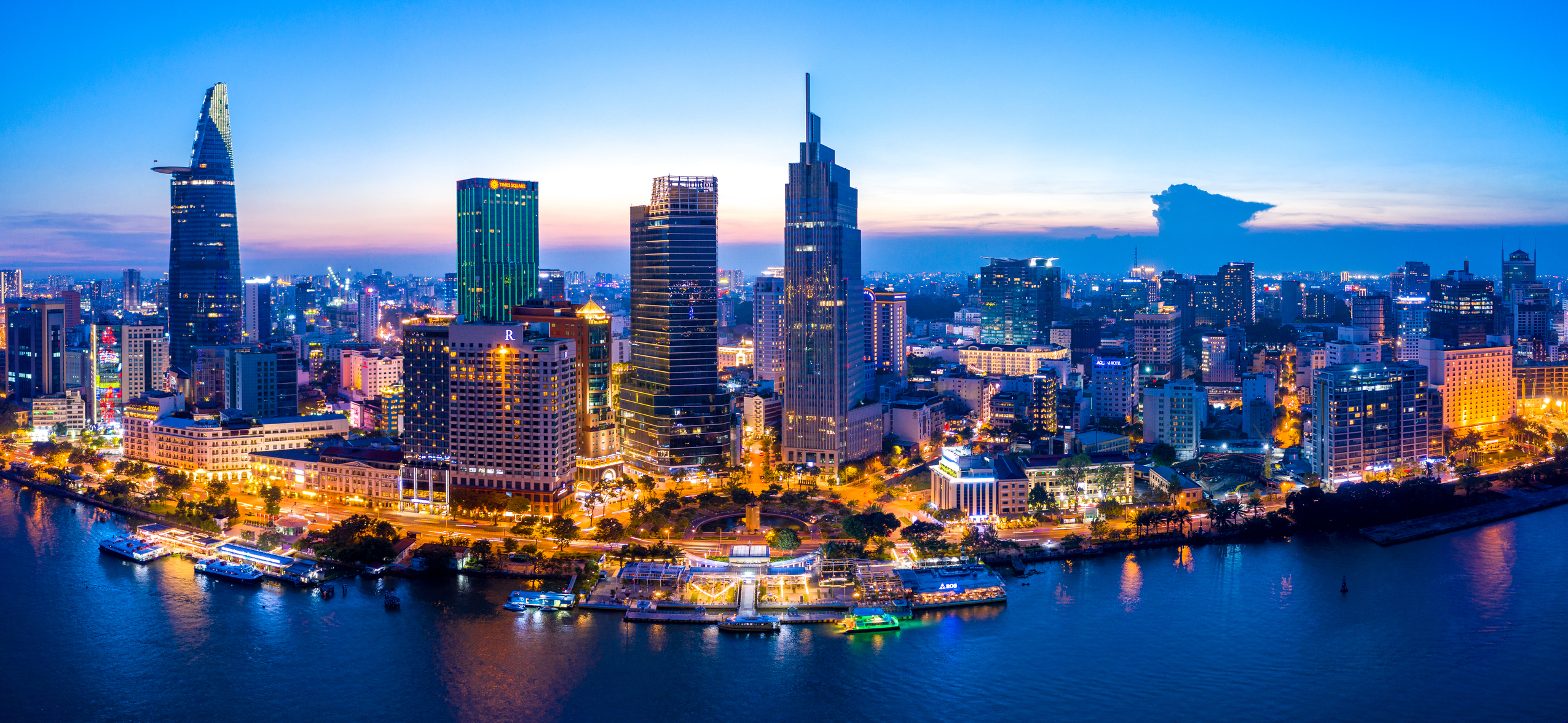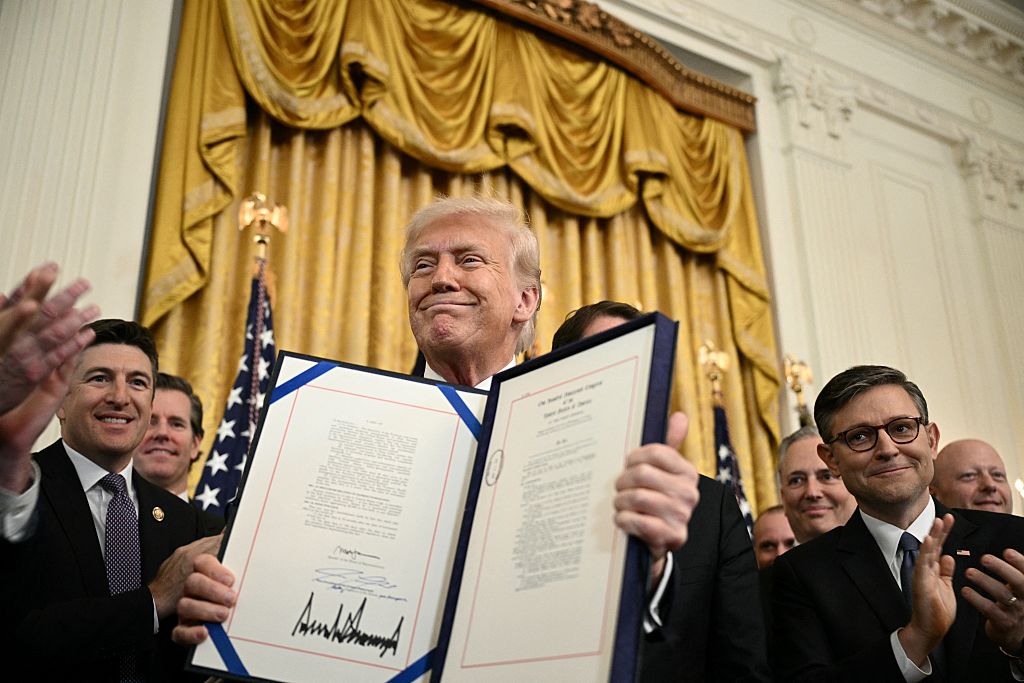Vietnam, Asia’s new tiger economy, is roaring. Investors take note.
Just two decades ago, Vietnam was one of the world’s poorest nations. Now it is a thriving regional hub with ample scope for further rapid development.

Ask old China hands about the early 2000s and you are likely to be met with a nostalgic sigh. The years following Beijing’s accession to the World Trade Organisation (WTO) in 2001 were a thrilling time in the Middle Kingdom. GDP growth repeatedly topped 10% per year. Foreign investment flooded in and manufactured goods poured out in astonishing quantities onto global markets.
Of course, rocky geopolitics have since soured that dream of an emerging “global village” (how often do we hear that term anymore?). Yet there is still a place where that post-Cold-War optimism is alive and well. To China’s south, there is another communist country whose economic dynamism, manufacturing prowess and openness to the West feels reminiscent of early 2000s China: Vietnam.
Vietnam’s own growth story is in some respects even more astounding than China’s. Even after the Vietnam War ended in 1975, the conflict-ravaged nation found itself under a US trade embargo that lasted until 1994. In 1979, intra-communist disputes saw Hanoi sucked into a brief border war with China, its powerful northern neighbour. Vietnam started the following decade as one of the world’s poorest nations, with a GDP per capita comparable to that of Ethiopia. By the mid-1980s the shortcomings of centralised command economies were becoming apparent even to Marxists. Just as the Soviet Union had Perestroika, and China had “Reform and Opening-up”, so Vietnam began “Doi Moi”. Literally meaning “renovation”, these reforms made more space for the private sector through deregulation at home and liberalised trade policy abroad.
MoneyWeek
Subscribe to MoneyWeek today and get your first six magazine issues absolutely FREE

Sign up to Money Morning
Don't miss the latest investment and personal finances news, market analysis, plus money-saving tips with our free twice-daily newsletter
Don't miss the latest investment and personal finances news, market analysis, plus money-saving tips with our free twice-daily newsletter
Vietnam’s growth story
Trade was key for Vietnam, whose impoverished domestic consumer base could not support a manufacturing economy. Instead, growth was to be export-led, enabled by a flurry of trade deals. In 1995 the country joined the Association of Southeast Asian Nations (ASEAN), the main regional bloc. In 2000, Washington and Hanoi put their old enmity aside to sign their first bilateral trade deal. Accession to the WTO followed in 2007.
In 1986 exports of goods and services represented less than 7% of Vietnam’s GDP; by 2021 that figure had risen to 93%. Within a single generation, Vietnam has gone from being one of the world’s poorest nations to having middle-income status, with GDP per capita rising 3.6 times in the two decades after 2002. Over that period Vietnam has enjoyed three distinct booms in foreign investment, says Yuji Nitta in Nikkei Asia.
- The first began in the mid-1990s when Honda Motor of Japan started “local two-wheeler production” and global sportswear brands moved in to set up local factories.
- Then the early 2000s saw tech firms from elsewhere in Asia establish production lines for simple electronics.
- Finally, in the mid-2010s, rising local incomes began to tempt in foreign retail businesses, such as Japanese “shopping behemoth” Aeon.
The overall effect has been to create an export powerhouse. As Jeff Prestridge notes in the Mail on Sunday, “more than half of Nike’s shoes and 60% of Samsung’s phones are made in Vietnam”.
Vietnam’s smartphone dominance
Vietnam’s smartphone dominance is in large part due to huge investments by South Korean giant Samsung. The firm employs more than 100,000 people in Vietnam, says Kim Eun-jin in Business Korea. Samsung’s $65bn of exports from Vietnam in 2022 accounted for an impressive 18% of all Vietnamese exports. It could herald an emerging fourth investment wave, says Nitta.
Vietnam is intent on pivoting from “labor-intensive” textiles and electrical assembly work into more profitable sectors, such as semiconductors. Foreign capital is keen to help, given the growing pressure to diversify supply chains away from China. US business investment has historically been more limited than that coming from Japan and South Korea, but a visit by president Joe Biden to Hanoi in September, at which the two countries upgraded ties to a “Comprehensive Strategic Partnership”, should act as a “green light” for increased investment from corporate America.
Vietnam has emerged as the clear winner in the race to find supply-chain alternatives to China. The country’s “competitive advantage is plain to see”, Andy Ho of the VinaCapital Vietnam Opportunity Fund tells The Sunday Times. Factory wages “are less than half those of China, while the quality of the workforce is comparable in many sectors”. The country is also geographically close to key technology supply chains in southern China.
Vietnam’s phone exports last year were six times India’s, notes Andy Mukherjee on Bloomberg. About 75% of the bill for materials in a typical smartphone is made up of the combined cost of the printed circuit board, camera module, touch screen and glass cover. Vietnamese manufacturers can source most of these parts from elsewhere in Asia with zero tariffs, thanks to the country’s network of free-trade deals. Their Indian rivals, meanwhile, must contend with customs duties as high as 22%.
Half of Nike’s shoes and 60% of Samsung’s phones are produced in Vietnam
The frontier market advantage
Vietnam’s booming economy has remained below the radar for most foreign investors for a simple reason: it is still not classified as an emerging market by MSCI. The leading index compiler continues to consider the country a “frontier market”, putting its stocks in the same category as Benin, Kazakhstan and Serbia.
An upgrade to emerging market (EM) status would prompt large inflows from funds that track the benchmark EM index, delivering a boost to local stocks of an estimated $5bn-$8bn. Vietnamese stocks are the single largest component of the frontier-markets sector, and foreign investors have spent recent years betting that an upgrade for such a dynamic emerging economy was only a matter of time. Yet the MSCI “gatekeepers” seem inclined to stick with the current classification for “the foreseeable future”, says Craig Mellow in Barron’s.
The main sticking point is strict limits on foreign ownership, which cap overseas holdings at 30% for banks and 49% for other listed firms. The problem may not be insurmountable. Thailand has previously found a workaround to similar issues by creating non-voting shares. But for now, the ownership rules look like “a deal killer for MSCI”.
Vietnamese stocks have other drawbacks. For one, they don’t provide perfect exposure to the country’s growth story, since multinationals such as Samsung account for three-quarters of Vietnam’s foreign sales.
Vietnam has plenty of light industry that assembles cameras and cables, says Lien Hoang for Nikkei Asia. Yet the country has yet to create a “local supplier that builds on the experience of working with multinational companies to establish a brand of its own”. One Vietnamese company has recently made bold moves for the Western consumer: electric-vehicle business VinFast, which is expanding quickly in the US. Yet instead of listing domestically, it chose to list over the summer in the US. Surprisingly, information technology (IT) stocks comprise less than 1% of the MSCI Vietnam index. Instead, Vietnam’s domestic market is dominated by banks and real-estate developers, which between them account for half of the overall market value, says Mellow.
Vietnamese stock market volatility
The preponderance of property companies has made Vietnamese shares vulnerable to a post-pandemic bust. As in China, Vietnamese authorities have initiated a clampdown on property speculation, imposing “leverage restrictions” and making “high-profile arrests of property tycoons” on charges of “bond market fraud”, says Greg McMillan in the Financial Times. The moves have forced “hundreds of smaller developers and property groups... into bankruptcy” and seen “thousands” of construction projects suspended. A crackdown on debt build-up in the property sector may be no bad thing in the long-term view, but in the short term, it has shaken business confidence.
Last year the local VN-index plunged by a third, one of the worst stockmarket performances globally. That was followed this year by an equally powerful bounceback. Vietnam has faced milder inflation than many Western economies of late, enabling the central bank to cut interest rates four times this year. That has sent ordinary retail investors flooding into the market in search of better returns than those available on bank deposits, says Nguyen Kieu Giang on Bloomberg. “The number of new brokerage accounts increased by 25%” in the month to August. The VN-index thus soared 19% between the start of 2023 and early September. The index remains up 10% so far this year, despite a recent pullback. There is never a dull moment on the Vietnamese market.
What's next for Vietnam?
Vietnam has been dubbed the new Asian tiger, bringing to mind the rapid development of South Korea, Taiwan, Hong Kong and Singapore in the latter half of the 20th century. Vietnamese investors certainly hope that the country can emulate the example of the earlier tigers to climb into the high-income bracket, defined by the World Bank as those countries with a gross national income per capita above $13,845.
Yet the Vietnamese need only look to their immediate neighbours in Southeast Asia to see that the path to prosperity can be a bumpy one. In the 1990s Thailand and Malaysia also produced impressive growth, but struggled to regain their old momentum in the years following the 1997 Asian financial crisis. While both remain much richer than Vietnam for now, they are far from the first promising emerging markets to have succumbed to the “middle-income trap”, which sees national income rise above poverty levels but become stuck well short of the rich world.
A 2019 report from Brookings, an American think tank, noted that “in order to become a high-income country by 2045, Vietnam will need to sustain average growth rates of at least 7% over the next 25 years”. That will become harder as the low-hanging fruit of workers moving “from lower-productivity agriculture to higher-productivity manufacturing” is picked. Vietnam’s low wages are a key attraction for inward investment, but that advantage can’t last forever if the end goal is a richer society. Yet there are also reasons for optimism. Vietnamese GDP per capita still sits at $4,000. That is less than one-third of the global average, so there should still be plenty of straightforward “catch-up” growth to come before the middle-income trap threatens to bite.
Many countries find their path to high-income status blocked by low levels of human capital that keep their workforces locked into mundane factory jobs. Yet Vietnam spends significantly more on education as a percentage of GDP than its immediate neighbours. Its students boast the second-longest learning-adjusted years of schooling in Southeast Asia, behind only wealthy Singapore, according to the World Bank’s data. Vietnam’s human capital index is the highest among lower-middle-income economies. Vietnam’s educated, entrepreneurial workforce thus looks well-equipped to secure their country a pay increase.
For investors, the volatile nature of the local stock market means that Vietnam isn’t yet one to put at the centre of a portfolio, but it still merits a nibble. This year’s rally has pushed up the price/earnings (p/e) ratio of the VN-index to about 15.36, comparable to Malaysia’s KLCI, although still at a large discount to Thailand’s SET (21.4) or India’s BSE Sensex (22.86). “Rerating of the market to much higher Southeast Asian valuations seems unlikely until we go into the MSCI-EM index”, says Dragon Capital’s Bill Stoops. When an upgrade comes (if ever) Vietnamese shares will enjoy a tremendous jolt, but investors shouldn’t drive themselves mad waiting. Even as a frontier market, Vietnam is a compelling play. Here is an under-theradar Asian growth opportunity on a scale comparable to that of India, but on a far cheaper rating.
What to buy
Three London-listed investment trusts offer access to Vietnam. All are active managers: regulatory complexity and significant unlisted opportunities make a purely passive approach impractical in Vietnam.
One option is the VinaCapital Vietnam Opportunity Fund (LSE: VOF). It invests beyond the stock market, dabbling also in private equity and property. The 2.64% ongoing charge is fairly steep, but that should be set against excellent performance, with a 39% gain over five years and 231.59% over the last ten years, plus a decent 2.91% dividend. A sizeable 21.6% discount to net asset value (NAV) cushions the blow of buying into a market that has grown more expensive this year.
The other two trusts stick to stocks.
The largest by total assets, Dragon Capital’s Vietnam Enterprise Investments (LSE: VEIL), focuses mainly on larger, liquid equities. It trades on a similar discount to NAV as the VOF. Its popularity may be due to the lower ongoing charge of 1.9%. However, its five-year return of 26% is less impressive than the VOF, especially when you consider that it pays no dividend.
Finally, there is the smaller Vietnam Holding (LSE: VNH), which is managed by Dynam Capital. It is skewed towards small- and mid-caps. It also pays no dividend and comes with a narrower 11% discount to NAV. However, in a year where a depreciating local currency, the dong, has wiped out returns for sterling-based investors, it is also the only one of the three trusts to have risen this year in pound terms.
This article was first published in MoneyWeek's magazine. Enjoy exclusive early access to news, opinion and analysis from our team of financial experts with a MoneyWeek subscription.
Get the latest financial news, insights and expert analysis from our award-winning MoneyWeek team, to help you understand what really matters when it comes to your finances.
Alex is an investment writer who has been contributing to MoneyWeek since 2015. He has been the magazine’s markets editor since 2019.
Alex has a passion for demystifying the often arcane world of finance for a general readership. While financial media tends to focus compulsively on the latest trend, the best opportunities can lie forgotten elsewhere.
He is especially interested in European equities – where his fluent French helps him to cover the continent’s largest bourse – and emerging markets, where his experience living in Beijing, and conversational Chinese, prove useful.
Hailing from Leeds, he studied Philosophy, Politics and Economics at the University of Oxford. He also holds a Master of Public Health from the University of Manchester.
-
 Boost for over 100,000 families on Child Benefit as new HMRC payment system rolled out
Boost for over 100,000 families on Child Benefit as new HMRC payment system rolled outThousands of households will no longer have to pay the dreaded High Income Child Benefit Charge through self-assessment
-
 Are you being haunted by the ghost of Christmas past? How festive cutbacks could boost your long-term wealth
Are you being haunted by the ghost of Christmas past? How festive cutbacks could boost your long-term wealthThe average family spends around £1,000 over the Christmas season. Here’s how much you could have gained if you had invested some of the money instead.
-
 Stock markets have a mountain to climb: opt for resilience, growth and value
Stock markets have a mountain to climb: opt for resilience, growth and valueOpinion Julian Wheeler, partner and US equity specialist, Shard Capital, highlights three US stocks where he would put his money
-
 The steady rise of stablecoins
The steady rise of stablecoinsInnovations in cryptocurrency have created stablecoins, a new form of money. Trump is an enthusiastic supporter, but its benefits are not yet clear
-
 SRT Marine Systems: A leader in marine technology
SRT Marine Systems: A leader in marine technologySRT Marine Systems is thriving and has a bulging order book, says Dr Michael Tubbs
-
 Goodwin: A superlative British manufacturer to buy now
Goodwin: A superlative British manufacturer to buy nowVeteran engineering group Goodwin has created a new profit engine. But following its tremendous run, can investors still afford the shares?
-
 A change in leadership: Is US stock market exceptionalism over?
A change in leadership: Is US stock market exceptionalism over?US stocks trailed the rest of the world in 2025. Is this a sign that a long-overdue shift is underway?
-
 A reckoning is coming for unnecessary investment trusts
A reckoning is coming for unnecessary investment trustsInvestment trusts that don’t use their structural advantages will find it increasingly hard to survive, says Rupert Hargreaves
-
 Metals and AI power emerging markets
Metals and AI power emerging marketsThis year’s big emerging market winners have tended to offer exposure to one of 2025’s two winning trends – AI-focused tech and the global metals rally
-
 8 of the best houses for sale with beautiful fireplaces
8 of the best houses for sale with beautiful fireplacesThe best houses for sale with beautiful fireplaces – from a 15th-century cottage in Kent to a 17th-century palazzo in Oxfordshire